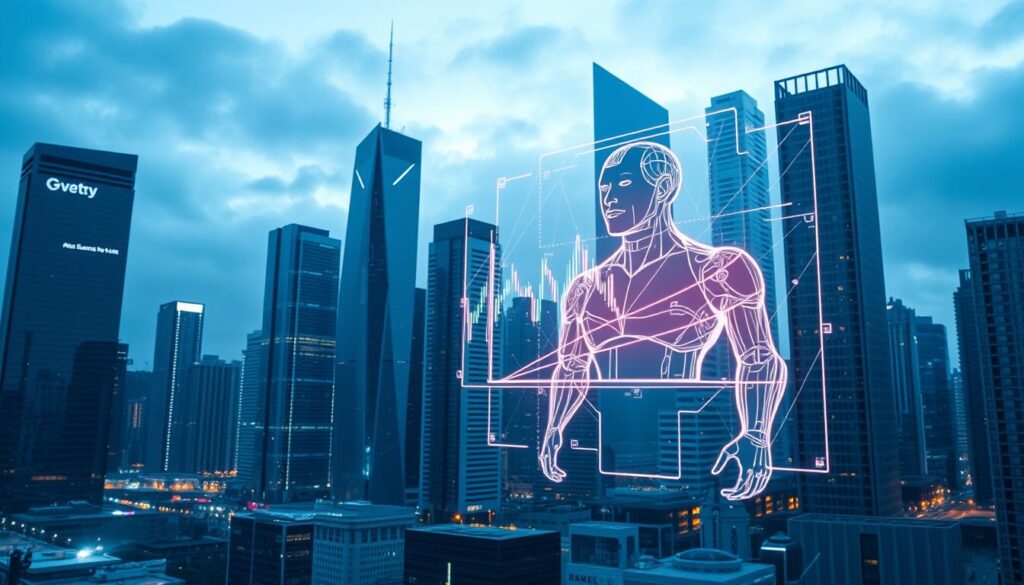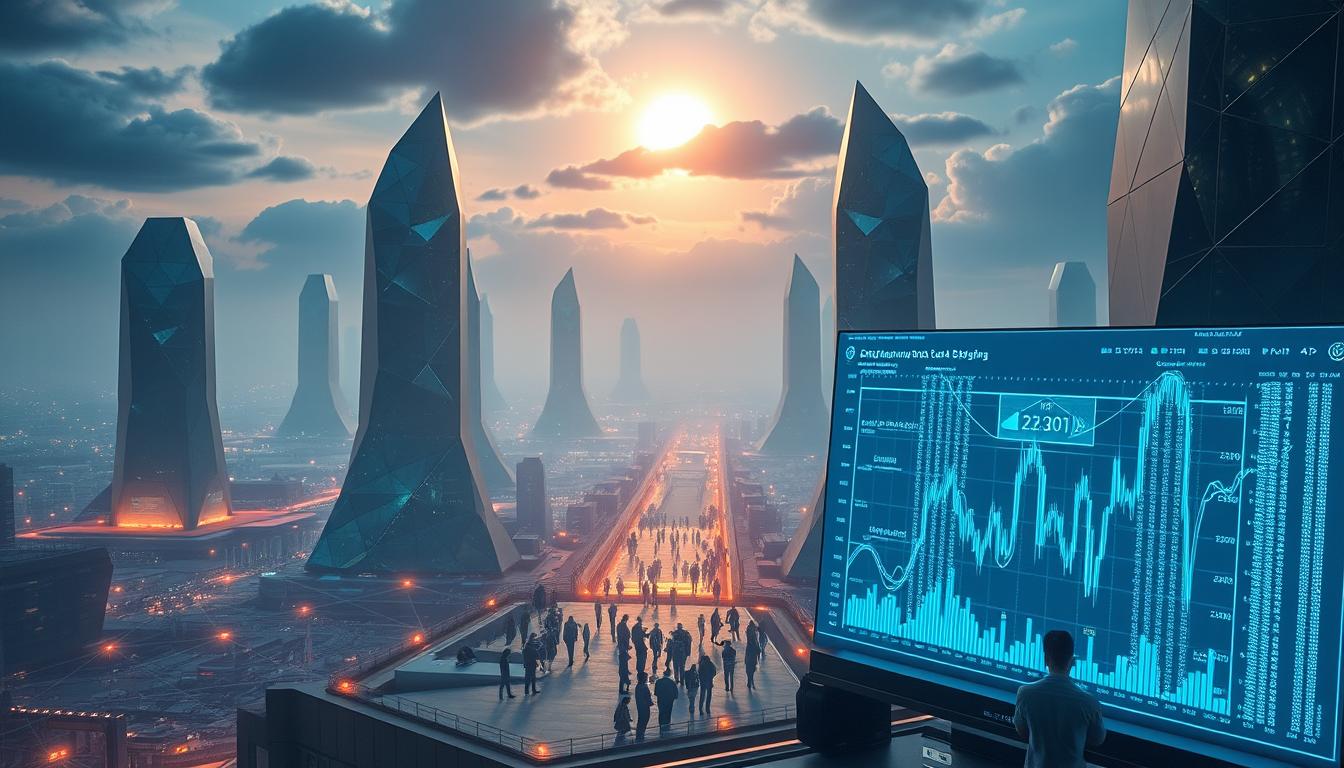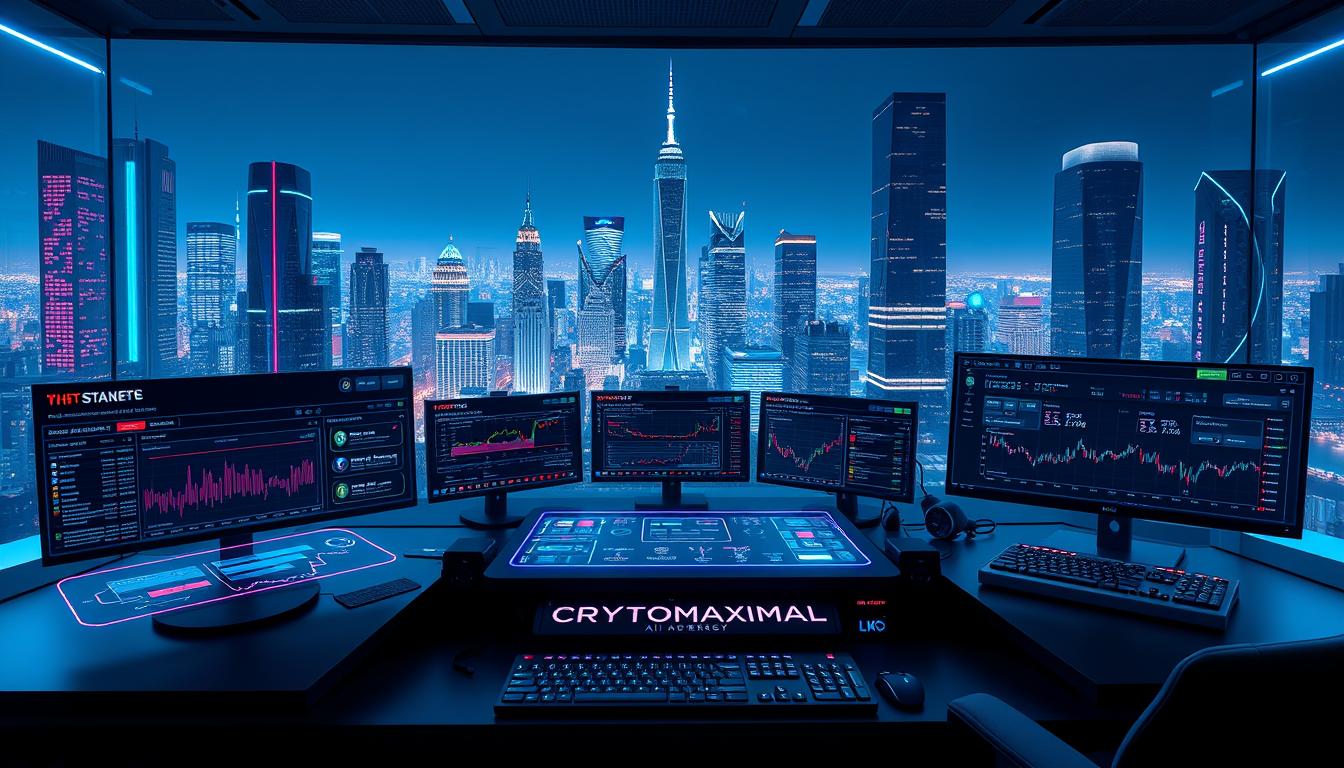Now Reading: Artificial Intelligence Crypto Coins: A Comprehensive List
- 01
Artificial Intelligence Crypto Coins: A Comprehensive List
Artificial Intelligence Crypto Coins: A Comprehensive List

Blockchain technology has revolutionized how decentralized services operate. Among these innovations, tokens enabling decentralized services have gained significant traction. This curated database tracks over 100 projects, offering a detailed look at their market performance and potential.
The resource includes real-time metrics such as prices, market caps, and project descriptions. It also provides direct links to whitepapers, social channels, and official websites, making it a one-stop hub for enthusiasts and investors alike.
Given the fast-moving nature of this sector, the database is regularly updated to ensure accuracy. Sourced from the CoinMarketCap API, it stands as a reliable tool for navigating this dynamic space. Whether you’re exploring new opportunities or staying informed, this list is designed to meet your needs.
Introduction to Artificial Intelligence Crypto Coins
Decentralized networks are now powering next-generation AI solutions. These innovative tokens combine the transparency of blockchain with the capabilities of machine learning. They enable a wide range of applications, from decentralized model training to GPU rendering and data indexing.
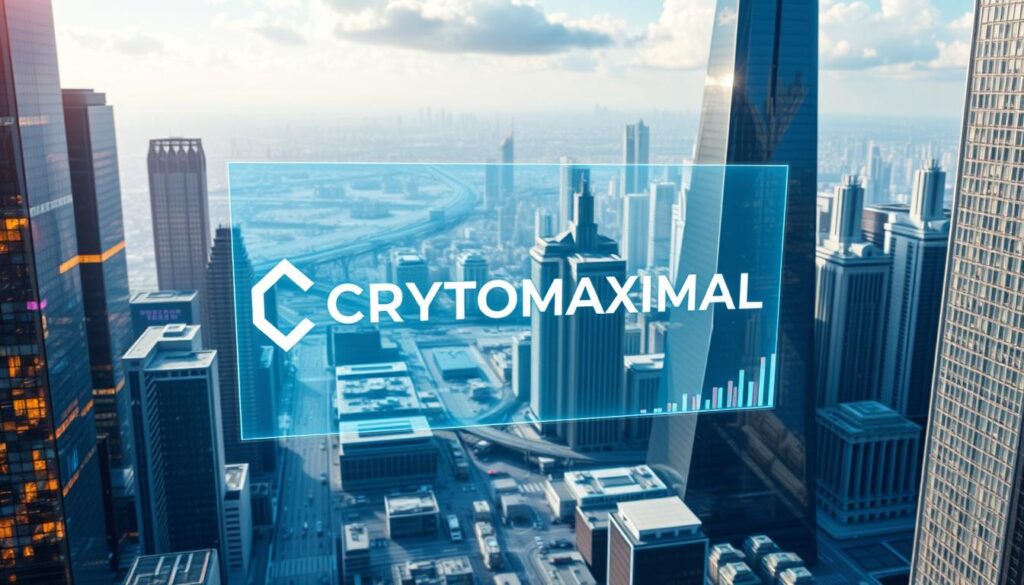
These tokens serve as the backbone of AI infrastructure and services. They bring together distributed ledger technology and machine learning workflows, creating a seamless ecosystem. This convergence allows for trustless verification, a key advantage over traditional cloud-based AI systems.
Here are three core use cases for these tokens:
- Decentralized Compute: Projects like Render use tokens to access GPU resources for rendering tasks.
- Data Marketplaces: Platforms such as Ocean Protocol enable secure data sharing and monetization.
- Autonomous Agents: Fetch.ai leverages tokens to power AI-driven agents for automation.
Tokens also play a crucial role in incentivizing resource providers and granting access to services. For example, Bittensor, with a market cap of $2.9 billion, showcases the sector’s maturity and potential.
Real-world applications are already emerging. NEAR Protocol, for instance, uses human-verified datasets to enhance AI accuracy. These advancements highlight the transformative power of combining blockchain and AI technologies.
Market Trends and Growth of AI Crypto Coins
The evolving landscape of tokenized projects reflects a surge in investor interest. By 2025, the total market cap for this sector is projected to reach $24-27 billion. This growth trajectory underscores the increasing adoption of decentralized technologies.
Post-2024, the market experienced a correction phase, with assets like Bittensor (TAO) dropping 57.6% from its peak of $760. Despite this, the sector is now in a consolidation phase, setting the stage for renewed momentum.
Performance leaders like TAO, NEAR, and RNDR continue to dominate. TAO boasts a $3 billion market cap, while NEAR and RNDR stand at $3.32 billion and $4.2 billion, respectively. Render’s 19% single-day surge in 2025 highlights the growing demand for GPU resources.
Virtuals Protocol has emerged as a standout, achieving a $1.8 billion valuation through agent tokenization. However, the sector remains volatile, with assets like AIXBT experiencing an 82% price drop.
According to CoinDesk Indices, the Computing Index has outperformed Bitcoin, signaling strong investor confidence in decentralized technologies. This trend further validates the sector’s potential for long-term growth.
Top Artificial Intelligence Crypto Coins List
Innovative projects are reshaping the future of decentralized ecosystems. These platforms combine advanced technologies with blockchain to deliver scalable and efficient solutions. Below, we explore three standout projects that are leading the charge.

NEAR Protocol (NEAR)
NEAR Protocol is a high-performance blockchain designed for scalability. Its Nightshade consensus mechanism enables over 100,000 transactions per second. With a market cap of $5.8 billion and 1.09 billion tokens in circulation, NEAR is a major player in the space.
The platform’s Near Tasks feature supports AI data labeling and validation. It also partners with projects requiring human-verified datasets, making it a key player in decentralized AI.
Render (RNDR)
Render leverages the Ethereum network to provide decentralized GPU rendering services. Priced at $7.24, it has a market cap of $2.8 billion. Render connects users with GPU resources, making it ideal for rendering-intensive tasks.
Its unique approach to resource sharing has driven significant adoption. Render’s network is a prime example of how blockchain can optimize resource allocation.
The Graph (GRT)
The Graph is a decentralized indexing protocol for blockchain data. With a price of $0.21 and a market cap of $2 billion, it plays a crucial role in organizing and querying data for AI and other applications.
By indexing data from multiple blockchains, The Graph simplifies access to critical information. Its network is essential for developers building decentralized applications.
Key Features of Leading AI Crypto Coins
Leading projects are redefining how machine learning and blockchain work together. These platforms combine cutting-edge technologies to deliver scalable and efficient solutions. Their unique features set them apart in the decentralized ecosystem.
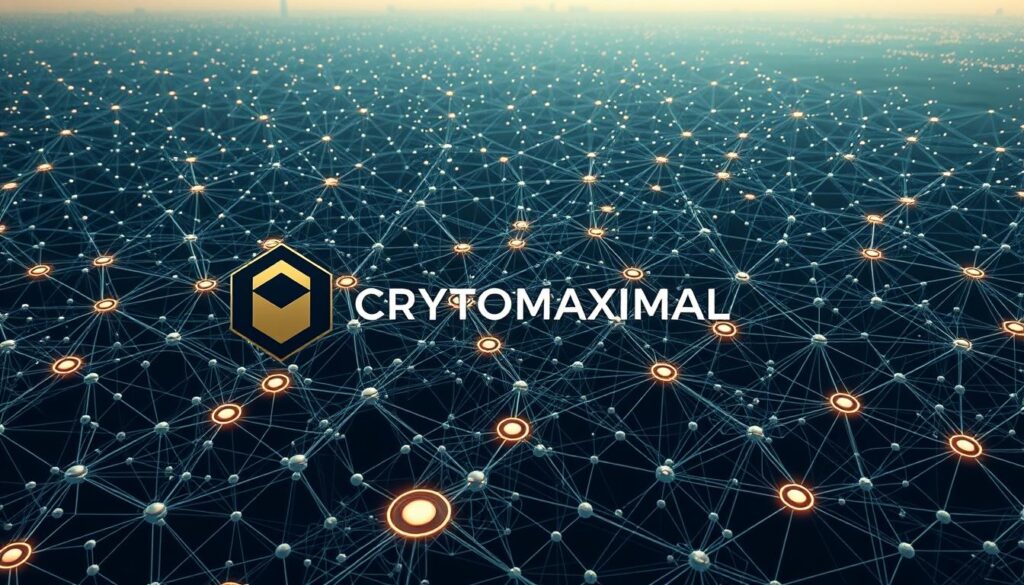
Decentralized AI and Machine Learning
Decentralized AI platforms are transforming how machine learning models are developed and deployed. Bittensor, for example, uses a proof-of-intelligence consensus with over 120 specialized subnets. This approach ensures high-quality models and efficient resource allocation.
Akash Network provides a decentralized cloud for machine learning training. It offers cost-effective solutions for developers and researchers. Fetch.ai’s Autonomous Economic Agents framework automates supply chain and logistics, showcasing the practical applications of decentralized AI.
Tokenomics and Governance
Effective tokenomics and governance are critical for the success of decentralized platforms. Virtuals Protocol, for instance, launches 21,000 agent tokens monthly, ensuring a steady supply for its ecosystem. This approach supports long-term development and user engagement.
Bittensor’s governance model allows stakeholders to vote on key decisions, fostering a community-driven platform. Fetch.ai also emphasizes decentralized governance, enabling users to shape the future of its ecosystem. These features highlight the importance of transparent and inclusive systems in decentralized technologies.
Real-World Applications of AI Crypto Coins
Practical use cases are driving the adoption of decentralized solutions in various sectors. From data monetization to smart contracts, these technologies are making a tangible impact. Below, we explore two key areas where these innovations are transforming industries.
Decentralized Model Training
Decentralized platforms are revolutionizing how machine learning models are trained. Ocean Protocol, for instance, enables secure data sharing and monetization for AI training. Its compute-to-data privacy solutions ensure sensitive information remains protected while being utilized.
Bittensor operates a distributed marketplace for models, allowing developers to access high-quality resources efficiently. Over 300 enterprises use Akash Network for cost-efficient training, showcasing the scalability of decentralized projects.
AI-Enhanced Smart Contracts
Smart contracts are becoming more powerful with the integration of advanced technologies. NEAR Protocol’s AI-optimized smart contracts enhance automation and accuracy in transactions. This approach is particularly beneficial for complex applications like supply chain management.
The Graph’s indexing capabilities support DeFi AI agents by organizing and querying data from multiple blockchains. This ensures seamless access to critical information, enabling smarter and more efficient network operations.
These real-world applications highlight the transformative potential of combining blockchain and machine learning. For more insights, explore our comprehensive guide on decentralized technologies.
Future Outlook for AI Crypto Coins
The next decade promises unprecedented growth in decentralized ecosystems. With advancements in blockchain and machine learning, the sector is poised for transformative developments. Emerging projects and innovations are driving this evolution, setting the stage for a new era of technological integration.
Emerging Projects and Innovations
Several groundbreaking projects are leading the charge in decentralized technologies. The Artificial Superintelligence Alliance (ASI), combining FET, AGIX, and OCEAN, is targeting a $6 billion market cap. This alliance aims to accelerate the development of advanced AI solutions on the blockchain.
Innovations like Virtuals’ SDK for AI agent development and Qubic’s 1M TPS blockchain for machine learning inference are pushing boundaries. NEAR Protocol’s zkML integrations are also noteworthy, offering privacy-preserving AI capabilities. These advancements highlight the sector’s potential for growth and innovation.
Market Forecast and Predictions
The market for decentralized compute tokens is projected to grow by 75% by 2025. Weekly sector growth is expected to reach $10 billion, driven by increasing demand for GPU resources and AI-driven solutions. The ASI Alliance is a key player in this growth, aiming to redefine the market landscape.
By 2030, the sector is expected to mature further, with a focus on scalability and efficiency. Projects like NEAR and Qubic are likely to dominate, thanks to their innovative approaches and robust development frameworks. These trends underscore the transformative potential of combining blockchain and advanced technologies.
Why AI Crypto Coins Are Shaping the Future of Blockchain
The integration of advanced technologies with blockchain is reshaping industries globally. These innovations address centralization risks in traditional systems, offering decentralized solutions that empower users. With 21,000 monthly AI agent launches on Virtuals and a $17 billion daily trading volume, the market is thriving.
Decentralized platforms democratize access to enterprise-grade tools, enabling creators to monetize tokenized assets. They also foster new revenue streams through decentralized compute, making GPU rental contracts surge by 400%. This positions blockchain as foundational infrastructure for future technologies.
The convergence of Web3 and AI is driving transformative applications, from metaverse ecosystems to decentralized AI development. Projects like Virtuals and NEAR Protocol exemplify this shift, showcasing the potential of combining artificial superintelligence with blockchain. As the market evolves, these technologies will continue to redefine industries, offering scalable and efficient solutions for a decentralized future.
FAQ
What are AI crypto coins?
These are digital assets that integrate advanced technologies like machine learning and decentralized networks to enhance blockchain functionality and applications.
Which projects are leading in this space?
NEAR Protocol, Render, and The Graph are among the top projects, offering unique features like decentralized model training and AI-enhanced smart contracts.
How is the market performing for these tokens?
The market capitalization for these assets has shown significant growth, driven by increasing demand for decentralized AI solutions and innovative blockchain use cases.
What are the key features of these coins?
They focus on decentralized AI, machine learning, and robust tokenomics, ensuring transparency and governance within their ecosystems.
What real-world applications do they have?
These tokens power applications like decentralized model training, AI-driven smart contracts, and data marketplaces, transforming industries like finance and healthcare.
What does the future hold for these assets?
Emerging projects and innovations are expected to drive further growth, with predictions pointing to increased adoption and market expansion.
Why are they important for blockchain’s future?
By combining AI with blockchain, these tokens are paving the way for smarter, more efficient, and scalable decentralized systems.


